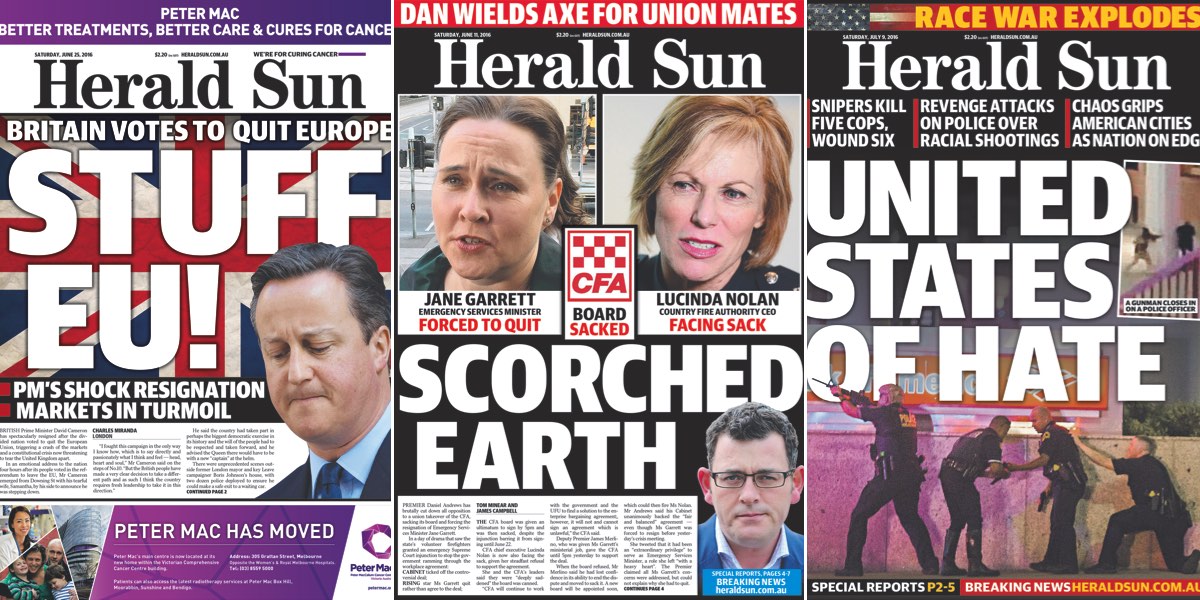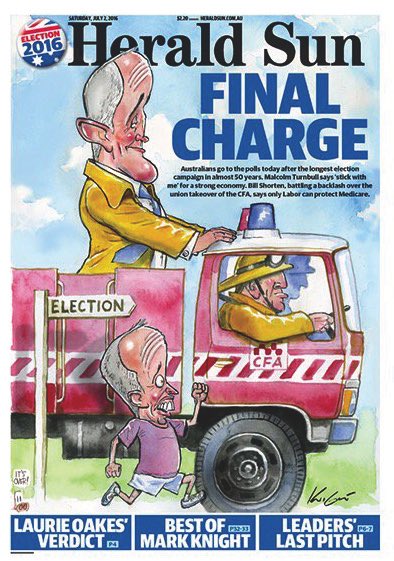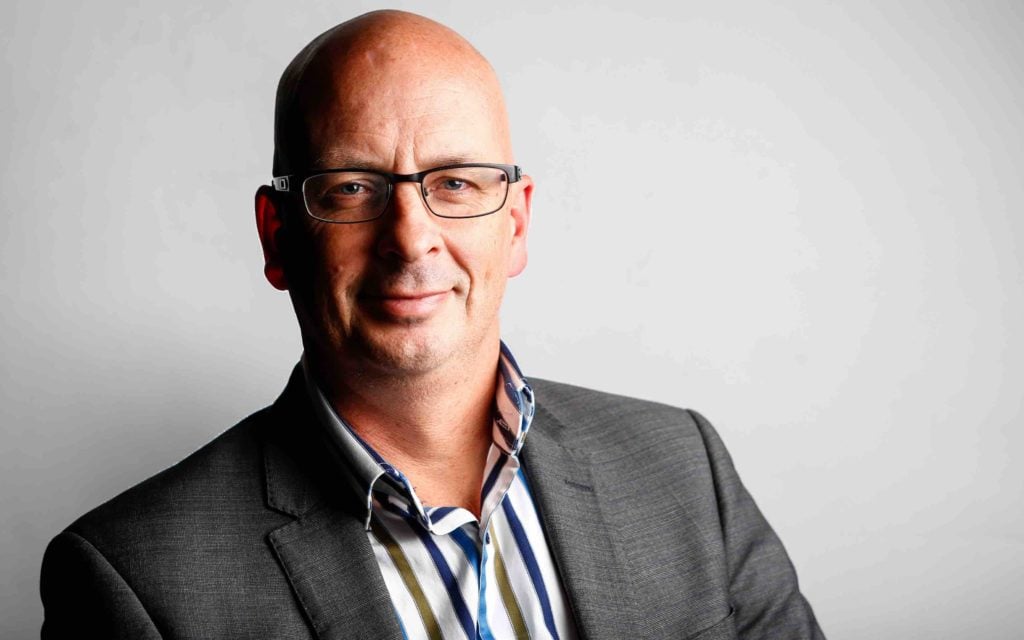The Herald Sun is the most-read daily newspaper in Australia. The key to its success, editor Damon Johnston said, is its robust coverage of the local news.
“In a modern media world where people are bombarded with news from every corner of the globe, you can’t forget your own backyard,” he told Mediaweek.
“The Age would probably agree that it is more a niche market publication, focused on small segments of the community. Its journalism reflects that” – Damon Johnston
“We invest heavily in covering local crime, community events, issues, sports and planning.”
Unlike The Age, which Johnston categorised as a niche publication, Herald Sun is aimed at the mass market.
“We reflect mainstream community opinions and on occasions we lead the community on a debate about cultural, social or law and order issues,” Johnston said.
One of the biggest stories for the Herald Sun this year has been the push from the Victorian Labor Party and Premier Daniel Andrews for a union to take over the Country Fire Authority. The story has been featured on the Herald Sun front page over a dozen times in the last eight weeks.
“While it is a state issue, it became a massive issue during the federal election. Both Labor and Liberal strategists accept that it cost the Labor party two to three seats in Victoria. If you stack that up against the narrow result, then our coverage of that campaign probably swung the overall election result in favour of Malcolm Turnbull,” Johnston said in speaking about the relevancy of newspapers today.
“That wasn’t our intention,” he quickly added. “The story wasn’t about Liberal or Labor. It was about us supporting the 60,000 CFA volunteers.”
The daily print edition of the News Corp’s Herald Sun is read by 1.253 million people, according to emma figures for 12 months to March 2016. This is more than two times the readership of Fairfax Media’s The Age, which stands at 598,000.
Johnston boasted about this by saying, “It’s one of the key differences between the Herald Sun and The Age.”
“The online space is very competitive. The competition is not just between us and The Age, but also Daily Mail and the AFL, which has its own digital news team”
He said: “The Age would probably agree that it is more a niche market publication, focused on small segments of the community. Its journalism reflects that.
“The media is a competitive environment. Sure, I look at their paper closely. Sometimes, we do cross over on the one story. Other times, it’s almost as if the two newspapers are reporting on different states or cities.”
When it comes to the competition online, The Age has been leading the Herald Sun in terms of unique browsers since the beginning of this year. But the News Corp title took over the Fairfax title in May 2016. According to the Nielsen Online Rankings for May 2016, Herald Sun had a unique audience of more than 2.7 million, just over 100 ahead of The Age.
Johnston said he was pleased with this number considering the fact that more than 50% of its content online is locked behind a paywall.
“We are no different to any other industry player. The ad market in print is challenging”
“We have a much harder paywall than The Age,” Johnston claimed. “We believe that people should pay for our content. It’s up to us to make it good enough for them to pay for. We are tracking well in that regard.”
He revealed: “We have 75,000 to 80,000 digital paid subscribers in addition to our print subscribers.
“The online space is very competitive. The competition is not just between us and The Age, but also Daily Mail and the AFL, which has its own digital news team.”
Having talked about its successes in digital, Johnston maintained that print continues to be the most profitable component of the business.
In the last issue of Mediaweek, The Age editor-in-chief Mark Forbes told us that while the newspaper is still an important part of Fairfax, the Monday to Friday papers would cease to exist in the distant future. Forbes said: “We still have a very loyal newspaper audience out there, but that audience is getting older. Younger readers would rarely be picking up the paper.”
Johnston refuted this point by saying: “That’s being overly pessimistic.”
He said the very fact that newspaper readers in Australia are ageing is a strong selling point.
“The average age of the Herald Sun reader is in the mid-40s. Clearly, that’s ageing. But people are living longer,” Johnston laughed.
“Australians are living longer, working longer and staying engaged with the news longer. For those reasons, I believe the right type of newspapers have many, many, many years to go.
“You have to be an optimist in this game.”
Despite saying that print is still profitable for Herald Sun and News Corp more widely, Johnston admitted that print ad dollars are declining.
“We are no different to any other industry player. The ad market in print is challenging,” Johnston admitted. “We believe that as long as our numbers hold up, which they do, then we have something to offer our advertisers.
“Everyone knows you don’t get your yield in digital as you do in print. That said, we are still writing a large of sum of advertising dollars from our websites. The other big revenue stream that is beginning to pay dividends is the digital paid subscribers.”
Another way the Herald Sun is combating the problem of declining print ad dollars is by indulging in the virtual gaming space. The masthead tapped into the AFL craze in the state five years ago with a fantasy football game called SuperCoach. The standard signup to the game is free, but a player can become a gold member by paying $4.95 every four weeks. Other News Corp mastheads including The Adelaide Advertiser, Geelong Advertiser, Perthnow, The Courier Mail and The Mercury also support the venture.



